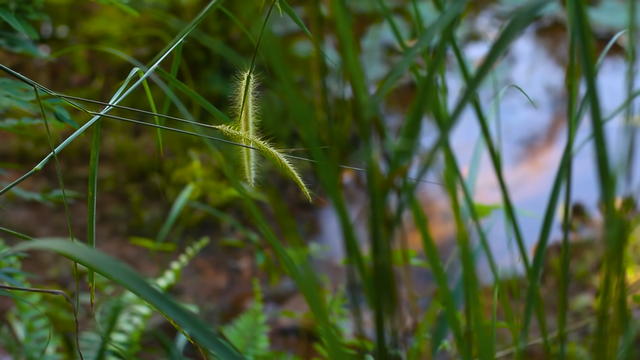Sedges

Sedges are monocotyledonous plants in the genus Carex that make up most of the species in the family Cyperaceae. This family consists of about 4,000 species distributed among about 90 genera, occurring world-wide in moist habitats in all the major climatic zones. The sedges are the largest group in the family with about 1,100 species, followed by the papyrus or nut-sedges (Cyperus spp.; 600 species), bulrushes (Scirpus spp.; 250 species), and beak-rushes (Rhynchospora spp.; 250 species).
The major importance of sedges and other members of this family is their prominent role in many types of ecological communities and the fact that they are an important source of food for many species of grazing animals. A few species are also of minor economic importance as food for humans.
The flowers of sedges are small and have some reduced or missing parts. Referred to as florets, they are either male (staminate) or female (pistillate), although both sexes can be present in the same cluster of florets, or inflorescence. Usually, the staminate florets occur in a discrete zone at the top of the inflorescence, with the pistillate florets beneath. Sedges achieve pollination by shedding their pollen to the wind, which then carries these grains to the stigmatic surfaces of female florets. The fruits of sedges are dry, one-seeded achenes, sometimes enclosed within an inflated structure called a perigynium.
Wetlands are typically the habitat for various types of sedges. Sedges may occur as terrestrial plants rooted in moist ground or as emergent aquatic plants, often rooted in the sediment of shallow water at the edge of a pond or lake, but with the flowering stalk and some of their leaves emergent into the atmosphere. Some species of sedge can occur in habitats that are rather dry, as in the case of some arctic and alpine sedges.
Sedges are an important component of the plant communities of many types of natural habitats, particularly in marshes, swamps, and the shallow-water habitats along the edges of streams, ponds, and lakes. Because sedges are relatively nutritious food for grazing animals, places rich in these plants are an important type of habitat for many types of herbivorous animals. These can range from the multitudinous species of insects and other invertebrates that feed on sedges, to much larger grazing animals such as elk (Cervus canadensis ), white-tailed deer (Odocoileus virginianus ) and other herbivores. Even grizzly bears (Ursus arctos ) will feed intensively on sedges at certain times of the year when other sources of nutrition are not abundant, for example, in the springtime after the bear has emerged from its winter hibernation.
Sedges and their relatives can sometimes dominate extensive tracts of vegetation, especially in places where shallow-water wetlands have developed on relatively flat terrain. For example, the extensive marshes and wet prairies of the Everglades of south Florida are dominated by the sawgrass (Cladium jamaicensis), a member of the sedge family.
[Source]
| Device | Xiaomi Redmi Note 4 |
|---|---|
| Category | Nature Photography |
| Location | Sylhet, Bangladesh |
| What3words | https://w3w.co/league.producers.hypnotist |
| Exposure | 1/14 |
| Aperture | 2 |
| Focal Length | 3.6 mm |
| ISO Speed | 800 |
| Flash | Off, Did not fire |
| Photo Credit | © @tanveer741 |